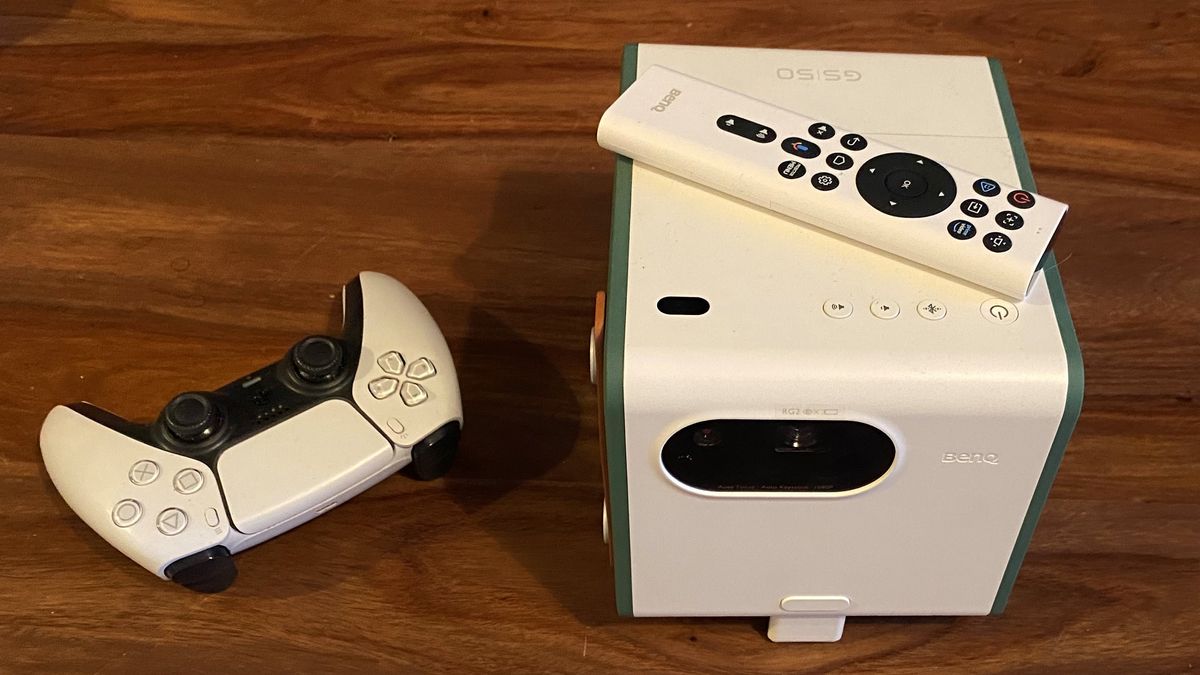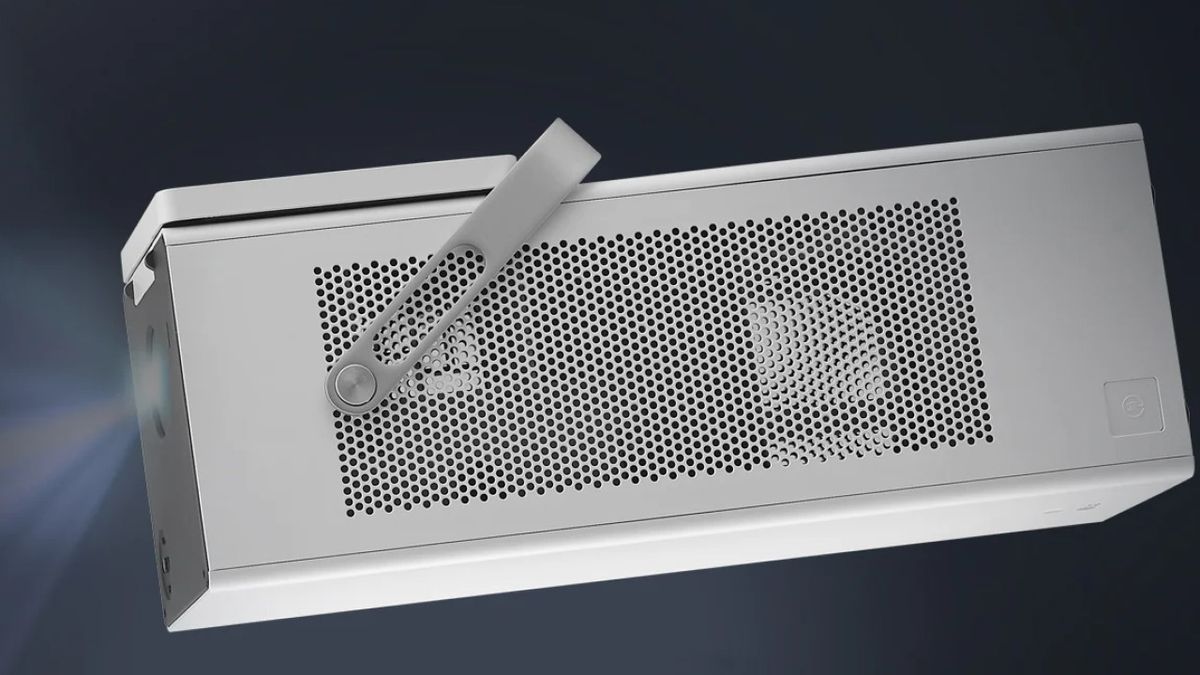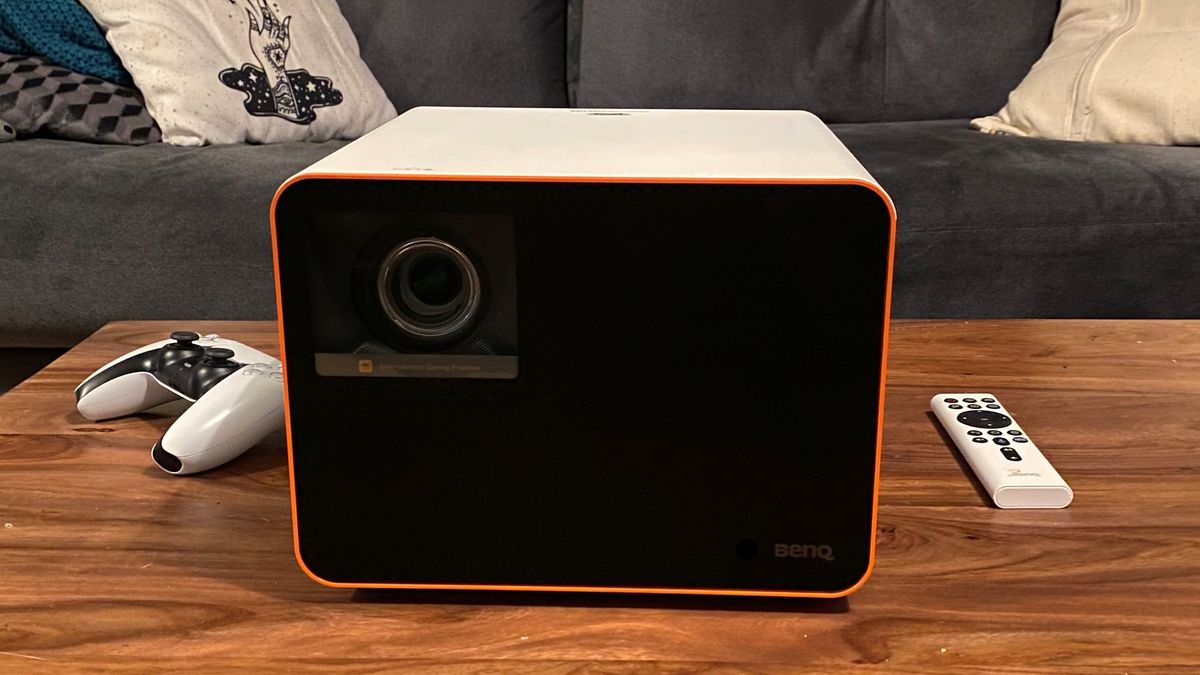Upgraded with Wi-Fi and smart home functionality, the UHD51A is the smarter stablemate to Optoma’s popular UHD51 4K HDR-enabled projector. We revisit the big-picture-giver to see whether, in 2022, it is still worthy of consideration when it comes to the best projectors for gaming.
Design & Features
The Optoma UHD51A looks the business. It’s gloss black, with a silver trim and it’s compact and light at 5.22kg, so you’ll have no problem popping it on a coffee table when you feel the need or ceiling mounting for a more permanent home cinema installation.
There are two 4K ready HDMI inputs, plus PC VGA, audio minijack in/out, and optical digital audio output. There are two USB media-reading ports, and a third is provided for the supplied Wi-Fi dongle. There’s also Ethernet, plus RS232 for system control and a 12v trigger to automate with a projector screen if you’re not using a white wall.
The UHD51A also has a modest sound system built in, just 2x5W, which is fine for a quick gaming session, but it’s not particularly exciting. You might want to use it with a more potent external sound system.
The supplied remote control is rather less fancy, with a simple thumbwheel design and a few keys, including Home, Back, and volume control.

Picture set up is old school, with both focus and 1.3x zoom manually operated. Getting the projector ready for voice interaction is more of a trial. You need to register and pair the projector on Optoma’s Device Cloud database. Then enable the Amazon Alexa skill ‘Optoma SmartProjection for Smart Home’, or convince your Google Home to link the product.
Alexa voice control is restricted to power, input, volume, and USB media player use – the projector’s player handles MKV and MPEG video files, which is useful. Google Home control also allows you to select display modes and motion smoothing. IFTTT works differently from both and involves the use of control applets. For example, you could program a Hue lighting scene to turn on the projector. Great if you’re already familiar with IFTTT protocols, less appealing if this is new to you.

Performance
Of course, what really counts is picture quality, and here the projector shines. Brightness is rated at 2,400 lumens, with a 500,000:1 dynamic contrast. It proves good enough for use in rooms with some ambient light, so is fine for an afternoon of supersized role-playing. Lamp life is rated at 4,000 hours in Bright mode, and 10,000 in Eco.
The detail is razor sharp. A single chip DLP device, the UHD51A uses a Texas Instruments XPR (eXpanded Pixel Resolution) 0.47-inch DMD device, which employs high-speed mirror flipping to deliver its UHD pictures.
The UHD51 is HDR compatible, and it does a good job of delivering bright spectral highlights. It looks equally good with SDR content though. Its black level performance is reasonable, with contrast nice and punchy. There’s a Dynamic Black mode which enhances dynamics but will crush shadow detail, so use under caution.
In Game mode, image lag is rated at 70ms, which we reckon is OK and makes it a solid choice as a projector for PS5 or Xbox, but not so much competitive fragging.
Subjective colour vibrancy is high. The UHD51A uses a six-segment RGBRGB colour wheel, which covers 100 per cent of the BT709 colour space. Texas Instruments TI Brilliant Color processing delivers plenty of candy colours and DLP rainbow flicker wasn’t really notable, which is a good thing.

Overall – should you buy it?
While the UHD51A’s smart functionality feels like an awkward bolt-on, the projector itself doesn’t disappoint. With its sharp UHD pictures and daytime-friendly brightness, it’s a solid 4K projector to game and binge boxsets on.
If you are looking for something more outdoor-focused as we’re still in summer then check out the best outdoor projectors and the best outdoor projector screens.
 Games News games, movies and TV you love.
Games News games, movies and TV you love.



